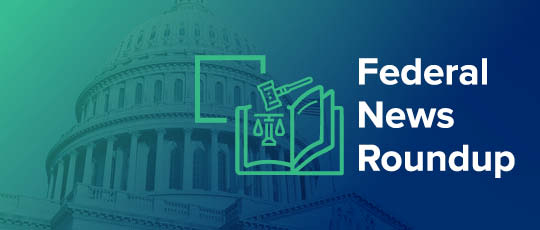For WorldatWork Members
- Total Rewards Inventory of Programs & Practices, research
- Health Insurance Selection Checklist for Employees, Workspan Daily Plus+ article
- What Does the Data Show on GLP-1 Prescribe Rates, Coverage, Costs? Workspan Daily Plus+ article
- Considerations to Manage the Costs of GLP-1 Coverage, Workspan Daily Plus+ article
- Health Plan Compliance Calendar, tool
For Everyone
- Healthcare Cost Projections Necessitate TR Strategy Updates, Workspan Daily article
- A Prescription for Rising Drug Costs, Workspan Daily article
- Most Employers Hold Firm on Well-Being Offerings — But Want Results, Workspan Daily article
- As Health Costs Spike, Total Rewards and CFO Collaboration Is Crucial, Workspan Daily article
- Employer Healthcare Costs Projected to Hit 10-Year High in 2025, Workspan Daily article
Employers will need to “make bold and strategic moves” to counter a second year of actual healthcare costs sharply outpacing projections, according to Business Group on Health’s 2026 Employer Health Care Strategy Survey, released Tuesday, Aug. 19.
The 121 primarily large employers surveyed by the health- and benefits-focused nonprofit organization between June and July predict 9% median healthcare cost increases for next year, offset to 7.6% with plan design changes. These dire forecasts for employers and their total rewards (TR) professionals come as more organizational employees:
- Use (or express interest in using) glucagon-like peptide-1 drugs (GLP-1s) for diabetes, obesity and other health concerns;
- Receive cancer diagnoses; and,
- Use (or express interest in using) mental health services.
Business Group on Health stated that, on a compounded basis, costs in 2026 are likely to be 62% higher than 2017 levels.
“In this challenging environment, employers remain firmly committed to an ongoing investment in employee health and well-being,” said Business Group on Health president and CEO Ellen Kelsay. “Yet, they will need to make bold and strategic moves to contain costs, sometimes disrupting healthcare models along the way.”
What levers might employers pull? According to Kelsay, this may include:
- Rigorously evaluating benefit offerings, vendor performance and patient outcomes;
- Exploring nontraditional health plan and pharmacy benefit manager (PBM) models; and,
- Urging workforces to use health plan resources and navigation tools to find high-value care, use primary care, and get recommended screenings and immunizations.
Survey respondents said other interrelated priorities for the coming year were:
- Affordability for both the organization and workforce;
- A greater reliance on utilization management and weight management programs in concert with GLP-1s to ensure optimal outcomes in obesity treatment; and,
- Assessment of mental health access and care appropriateness.
Concerns and Commentary
Additional findings and insights from the new survey amplified some of employers’ biggest worries (see below).
|
Survey Finding |
Business Group on Health Insight |
|
The unfavorable cost environment precipitates a “call to action” for employers to address healthcare spending. |
“Both the unit cost and utilization of healthcare services have surged, and employers and employees must together address affordability. Employers must take a hard look at benefit offerings and eliminate those that do not deliver value. In response to these cost concerns, [41% of] employers are either changing PBMs or conducting a request for proposal (RFP), while 51% are either changing or conducting an RFP for other health and well-being vendor relationships.” |
|
Expensive obesity medications play a significant role in overall healthcare cost increases. |
“Seventy-nine percent of employers have seen an uptick in the use of GLP-1s, while an additional 15% anticipate seeing such an increase in the future. In addition, the percentage of employers covering GLP-1s for conditions other than diabetes will stagnate as employers try to stabilize their healthcare costs, while more of those that cover these medications for weight loss will require utilization management, prescriptions from specific providers, participation in a weight management program and higher expectations from vendor partners to deliver sustainable, cost-effective financial models for this class of medications.” |
|
A systemic overhaul of the pharmacy supply chain is essential to address pharmaceutical costs for both employers and employees. |
“While most employers use plan design approaches and other strategies offered by their PBMs, pharmacy cost pressures also have resulted from rising prices, a robust pipeline of expensive therapies and cost-shifting from proposed changes to Medicare and Medicaid. In 2024, [24%] of all employer healthcare spend went to pharmacy expenses. Further, employers see no relief on the horizon, with a forecast of an 11% to 12% increase in pharmacy costs heading into 2026. This cannot be remedied by plan design changes, and employers need to explore PBM models that champion transparency and rely less on rebates.” |
|
American healthcare costs have hampered multinational employers’ ability to execute their health benefits strategy outside the U.S., making global healthcare costs a growing concern. |
“Sixty-seven percent of multinational employers said [U.S. healthcare costs] affected worldwide offerings. Moreover, when asked about controlling healthcare costs outside the U.S., three-quarters of multinational employers indicated some level of concern, with 34% expressing the strongest levels of concern. Cancer, musculoskeletal conditions, cardiovascular issues and diabetes were again identified as the top cost drivers of concern worldwide.” |
|
Employers need to continue to innovate and drive change to optimize the care their employees receive. Crucial to this effort is employers holding vendors more accountable for value and challenging them to present bold ideas to improve care and the employee healthcare experience. |
“Employers see several approaches as having promise to improve quality of care: navigation to higher-quality providers (selected by 82% of employers), greater transparency of quality data (82%) and coordination of integrated care teams (79%). However, these actions are dependent on partners’ ability to bring forward bold ways to promote, enable and demonstrate quality. Appropriate site-of-care selection can link quality to lowered cost. Employer strategies also include creative methods of deploying center of excellence (COE) programs and expanding the use of COEs to cover conditions that are highly prevalent across a broader segment of the population.” |
|
For the fourth year in a row, cancer is the top condition driving employer healthcare costs. This is made worse by a growing prevalence of cancer diagnoses and escalating treatment costs. |
“Employers will have a greater focus on cancer prevention and screening coverage, including alternatives to colonoscopies, expanding coverage of breast cancer screenings and removing age restrictions on preventive care coverage. Employers also recognize access to high-value treatments is essential, with about half offering a cancer COE in 2026, and another 23% considering doing so by 2028.” |
|
Most employers have seen an increase in mental health services usage, making it an emerging cost driver. As employers continue to seek ways to expand access to these services, they want to ensure offerings are high-quality and appropriate. |
“Fully 73% of employers reported an increase in mental health and substance use disorder services, while another 17% anticipate a future increase.” |
|
Women’s preventive care, menopause and enhanced maternity support will continue to expand as employers boost their recognition of women’s unique health needs. |
“In 2026, 58% of employers will expand preventive care for women, an increase of 22 percentage points in just two years. While 58% of employers will provide menopause support programs, an additional 25% said they planned to expand programs for menopause by 2028. This is a noteworthy change from 2024, when only 28% of employers had programs in place to support employees going through menopause. In addition, enhancements on the rise include employer coverage of doula services (36%), services to treat postpartum depression (55%), initiatives to support high-risk pregnancies in under-resourced populations (43%) and group-based prenatal care (30%).” |
|
The Employee Retirement Income Security Act (ERISA) and the favorable tax treatment of benefit plans remains central to employers’ ability to offer comprehensive, high-quality and affordable coverage. |
“Almost all employers (99%) said protecting and affirming ERISA was a key policy imperative. When employers were asked to rank their top priorities for the U.S. government, 85% responded with protection of tax-free status as one of their top five, followed closely by protection of ERISA preemption (81%). In addition, [62% of employers] said they would also prioritize pharmacy supply chain reform.” |
Editor’s Note: Additional Content
For more information and resources related to this article, see the pages below, which offer quick access to all WorldatWork content on these topics:
#1 Total Rewards & Comp Newsletter
Subscribe to Workspan Weekly and always get the latest news on compensation and Total Rewards delivered directly to you. Never miss another update on the newest regulations, court decisions, state laws and trends in the field.








